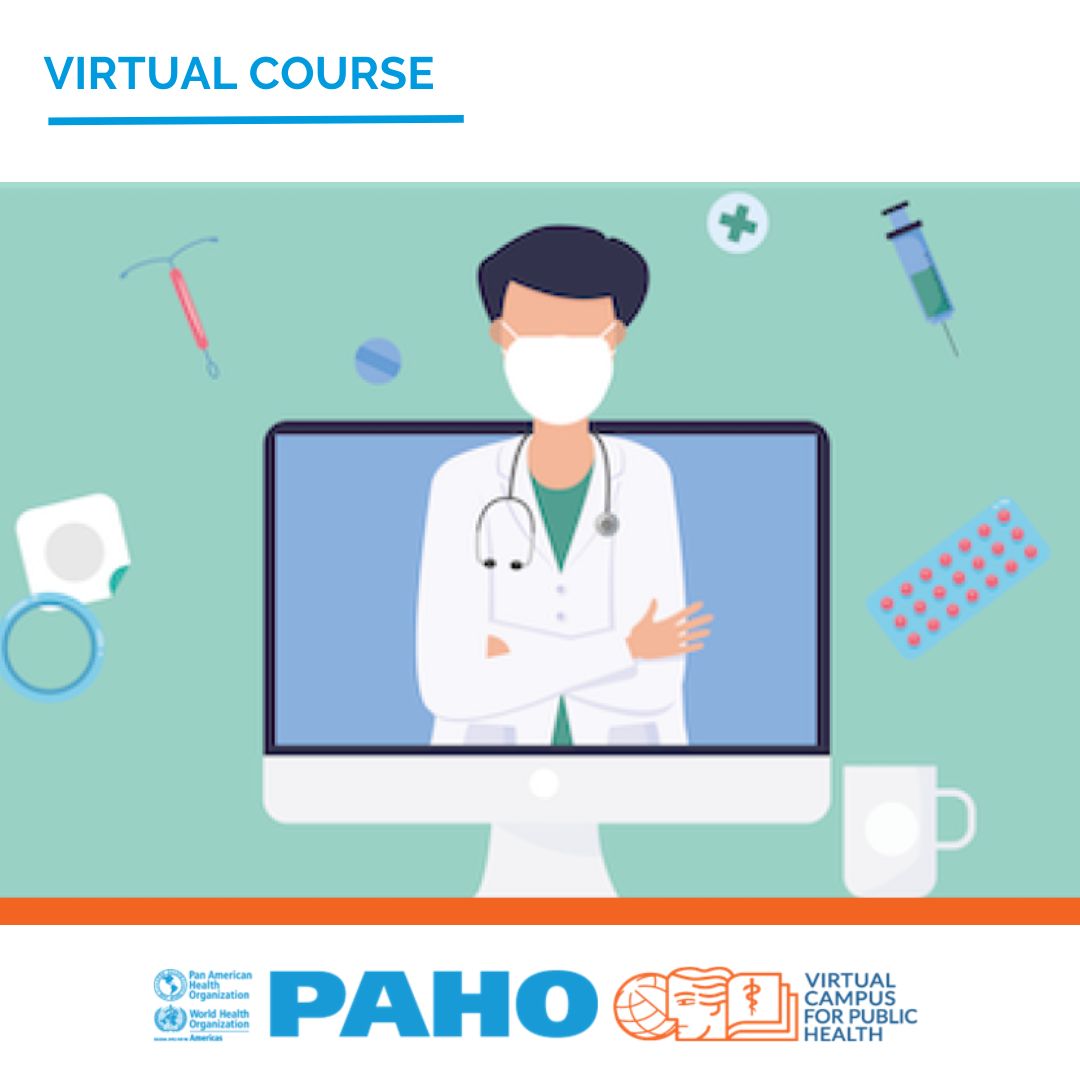
VERSIÓN ESPAÑOL ENGLISH VERSION VERSÃO PORTUGUESA VERSION FRANÇAISE
Introduction
Reducing the vast unmet need for family planning remains a challenge to countries and the global health community. Family planning providers are at the core of health system responses to these challenges, especially during critical times, such as those brought about by the COVID-19 pandemic.
Having a virtual course available will allow the members of healthcare teams to acquire the knowledge and skills they need in order to improve the quality of the counseling and care they provide to users, expanding the exercise of the sexual and reproductive rights of the population.
The current situation, especially within the context of the restrictions on movement imposed due to the COVID 19 pandemic, makes the virtual approach to these issues particularly relevant.
Teaching Strategies
The course will use teaching resources and tools from the virtual platform to promote learning linked to practical performance, by means of examples with interactive exercises that will allow participants to move through the different modules.
Purpose of the Course
To contribute to the reduction of Maternal Mortality and severe maternal morbidity, and to increase the rate at which contraception needs are met by using modern methods.
Having a completely virtual course available will make it easier for healthcare team members to gain access to knowledge that will translate into skills, which, in turn, will improve the quality of care, expanding the exercise of the sexual and reproductive rights of the population. Given the movement restrictions imposed during the COVID-19 pandemic, makes the virtual approach to these issues particularly relevant and convenient with the purpose of sustaining and strengthening the provision of quality care and essential services.
Learning Objectives
Main Objective: To provide specific and practical guidance on 21 modern family planning methods following WHO’s 2019 guideline.
Specific Objectives:
- To describe each method consists of and its effectiveness.
- To identify expected side effects, characteristics, and misconceptions associated with each method.
- To describe when clinical judgment should be used.
- To state who can and cannot use the different contraceptive methods, and when.
- To explain side effects and provide user guidance.
- To identify different groups that should receive counseling on contraception.
- To recognize ways to deal with sexually transmitted infections.
- To characterize the ways in which contraception counseling should be provided during public health emergencies.
Course Recipients
This course is mainly aimed at healthcare professionals who provide contraception at the first level of care, as well as healthcare managers, supervisors, and policy makers who provide family planning services in developing countries.
Course Load and Dedication
The course is open and available at the CVSP (Public Health Virtual Campus).
As a self-paced course, participants can manage their own schedulest. The estimated time for completing all the modules and the final evaluation is 14 hours.
Course Structure
Introductory Module
Module 1 Combined Oral Contraceptives
Module 2 Progestogen-Only Oral Contraceptives
Module 3 Emergency Contraception Pills
Module 4 Progestogen-Only Injectables
Module 5 Monthly Injectables
Module 6 Combined Contraceptive Patch
Module 7 Combined Contraceptive Vaginal Ring
Module 8 Progesterone-Releasing Vaginal Ring
Module 9 Implants
Module 10 Copper Intrauterine Device
Module 11 Levonorgestrel-Releasing Intrauterine Device
Module 12 Female Sterilization
Module 13 Vasectomy
Module 14 Male Condoms
Module 15 Female Condoms
Module 16 Spermicides & Diaphragms
Module 17 Cervical Caps
Module 18 Fertility Awareness Methods
Module 19 Withdrawal (Coitus Interruptus)
Module 20 Lactational Amenorrhea Method
Module 21 Care Provided to Different Groups
Module 22 Sexually Transmitted Infections
Module 23 Maternal and Newborn Health
Module 24 Reproductive Health Issues
Module 25 Provision of Contraception Counseling
Module 26 Family Planning for Women at High Risk for HIV
Module 27 Provision of Family Planning Services During Public Health Emergencies
This material was made possible thanks to the support of:

